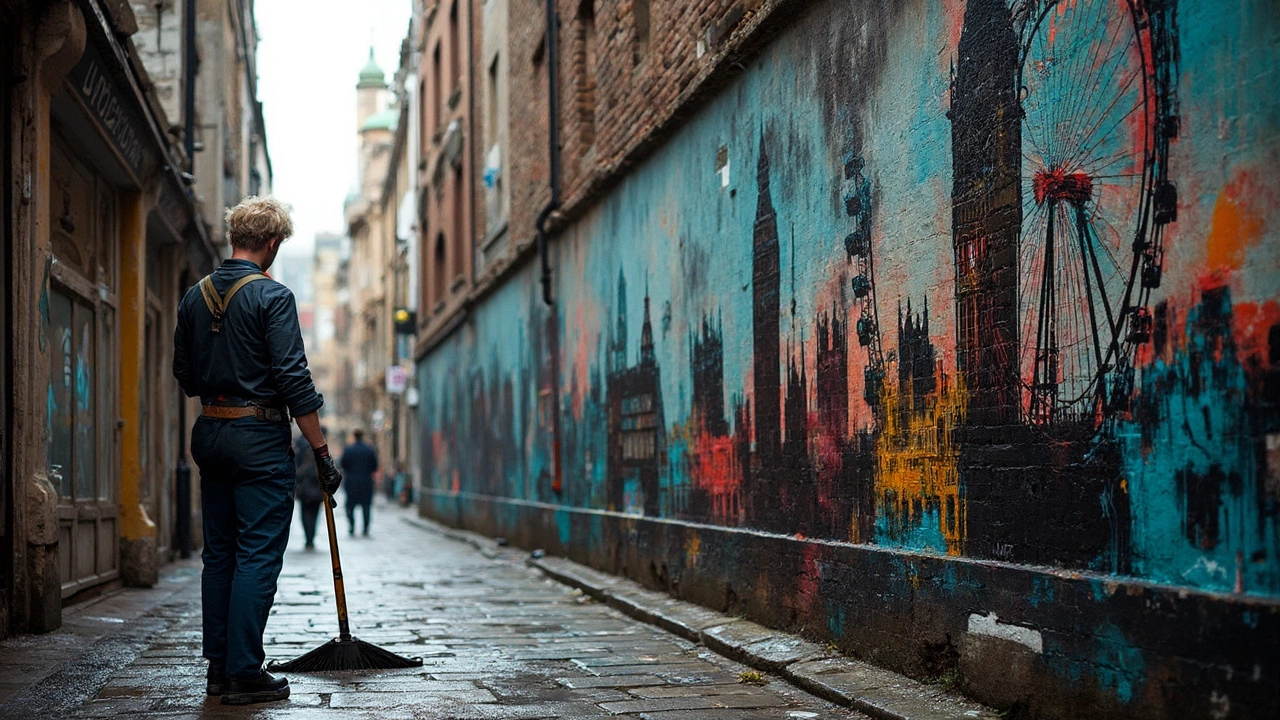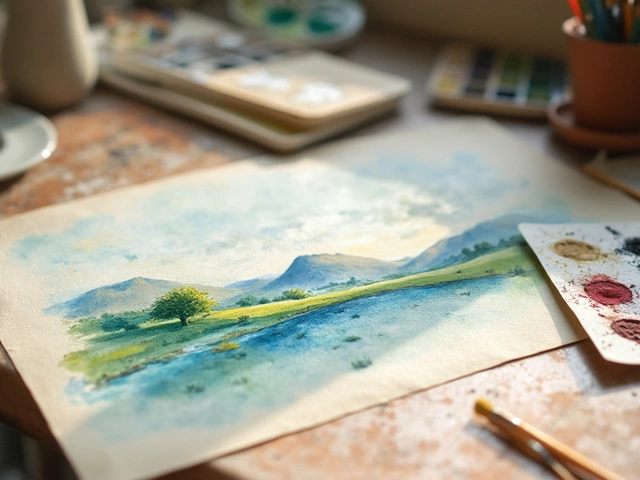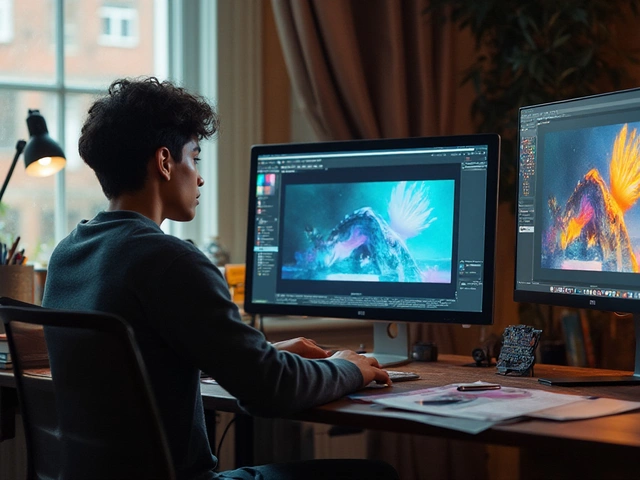Street art can be a bit of a puzzle when it comes to legality. Different places have different rules, which can make things tricky for artists who just want to make their mark — literally and figuratively. Some spots celebrate street art as this raw, expressive culture burst, while others see it as a neat paint job gone rogue.
Alright, so what's the deal with street art being legal or, well, not? In some cities, you need a permit to paint on public or private property, while others have designated areas where artists can go wild. But get this—some street art transforms dull and forgotten areas into lively spaces, convincing city officials to give a thumbs-up rather than taking it down.
- Understanding Street Art
- Legal Aspects of Street Art
- Case Studies from Around the World
- How to Stay on the Right Side of the Law
- The Impact of Legal Street Art
Understanding Street Art
Street art isn't just splattered paint on a wall—it's evolved into a global cultural movement with roots deep in history. This art form dates back to ancient times with graffiti found on walls in Pompeii and even in caves. Yet, modern street art as we know it really took off in the 1960s and 70s in places like New York City.
Characters like Jean-Michel Basquiat and Banksy have turned street art into a beloved staple in the art world. They, along with many others, have blurred the lines between art and vandalism, using urban landscapes as their canvas. Often, street art sends powerful messages, whether about social issues or just humorous takes on life.
Types of Street Art
Street art comes in different shapes and sizes. Graffiti is the most recognizable, with bold letters and vibrant colors jumping out from every corner. Then there's stencil art, making use of cut-out designs to quickly replicate intricate images with a spray can. Murals, often sprawling across entire walls, can transform areas with breathtaking landscapes or lifelike portraits.
- Graffiti: Known for stylized lettering and use of spray paint.
- Stencil Art: Quick and repeatable, often with bold, impactful images or messages.
- Murals: Large, detailed artworks painted directly onto walls, often commissioned.
The Public Perception
The tricky part about street art is how people perceive it. Some see it as an eyesore, while others view it as legitimate art that beautifies or rejuvenates neighborhoods. There’s no denying its impact though - it’s said that street art can increase foot traffic and promote local businesses simply by bringing attention to otherwise overlooked spots.
As a side note, a study found that more than 70% of people view street art as a positive influence in urban areas, valuing its cultural and aesthetic contribution.
Legal Aspects of Street Art
Understanding the legality around street art can be like navigating a maze. What flies in one city might get you in trouble in another. The rules vary widely, so let’s break it down a bit.
Permits and Permissions
If you want to stay on the safe side, getting a permit is key. Some cities issue permits for artworks on public property, and in some cases, private property owners can give the green light too. It's always a good idea to check with local authorities to see what's what. Think of it like a backstage pass to painting your masterpiece where the world can see it.
Legal Consequences
Without the right permissions, graffiti (a common form of street art) can be considered vandalism. Vandalism is taken pretty seriously, with varying consequences depending on the location. For example, in New York City, getting caught can lead to hefty fines or even community service. Some places even take it to the next level with potential jail time, especially if the damage is extensive or on historical buildings.
Graffiti and Public Perception
Public perception plays a huge role in the legal aspects of street art. Murals that brighten a neighborhood might be welcomed, while tags that feel destructive might not. This shift in perception has led some cities, like Berlin, to designate specific zones where street art is legal, aiming to satisfy both artists and the community.
Interesting Stats and Facts
Here's something cool—did you know there are organized street art festivals in places like Miami? Events like Art Basel encourage legal artworks that attract tourists and boost the local economy. By supporting these events, cities are slowly recognizing the value of street art when done legally.
Navigating International Waters
Fancy painting in Paris or Tokyo? Be prepared for some serious homework. Every country has its own laws regarding street art. For instance, in France, artistic freedom is celebrated, but defacing historical monuments or public buildings is a big no.
The takeaway? Before you whip out those spray cans, make sure you’re in the know about local laws and respect the community’s views. Navigating the legal landscape of street art isn’t always straightforward, but understanding the rules can help turn potential legal woes into celebrated creative wins.
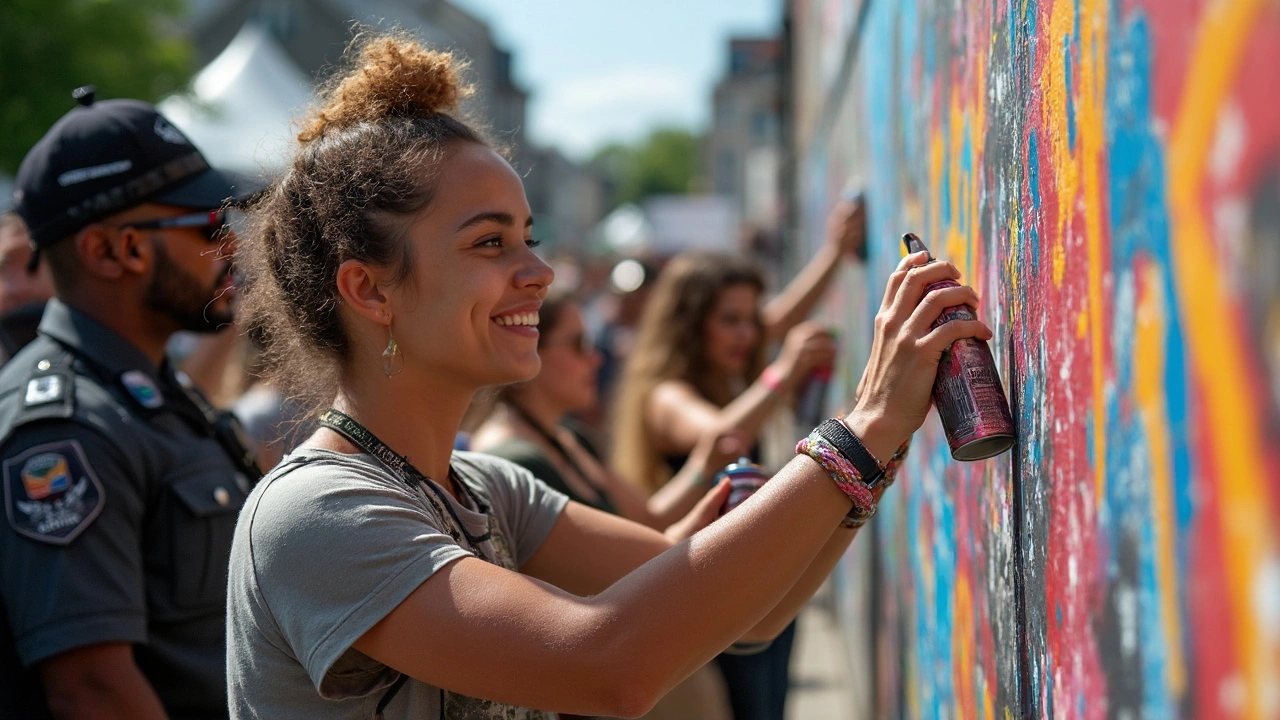
Case Studies from Around the World
The world of street art is as varied as the cities that host these colorful creations. Different places treat it in unique ways based on cultural, legal, and social attitudes. Let's check out a few standout examples.
Berlin: A Haven for Creativity
Ever been to the East Side Gallery in Berlin? That's 1.3 km of the Berlin Wall covered in art — legally! Berlin's chill attitude towards legal street art means it's become a hotspot for artists from all over the globe, with much of its tourism even centered around this creative vibe.
New York City: A Dance with the Law
In New York, it's a mixed bag. You've got iconic spots like the Bowery Wall, which regularly features commissioned pieces that are completely legal. But elsewhere, like in the subways, unauthorized street art is quickly painted over. A prominent NYC street artist once said,
"Street art is the ultimate escape from conformity, but here, it can also be a ticket to a fine."
Melbourne: Street Art or Vandalism?
Melbourne is another city where things get interesting. On one hand, it celebrates street art with open arms in areas like Hosier Lane, but unauthorized art in non-designated spots can get you fined. The local council even has a system for businesses to let them know if they consent to street art on their property.
Table: Street Art Legalities by City
| City | Legal Status | Famous Spot |
|---|---|---|
| Berlin | Mostly legal | East Side Gallery |
| New York City | Partially legal | Bowery Wall |
| Melbourne | Designated areas | Hosier Lane |
So what can we learn here? If you're picking up a can of spray paint, know your local laws. In some places, the spirit of artistic expression gets celebrated, while in others, it might need a little more strategic planning. And who knows, your art might end up as a tourist attraction!
How to Stay on the Right Side of the Law
If you're passionate about street art and want to avoid getting into trouble, here's the lowdown on keeping it legal and respecting local rules.
Get Permission First
This one's huge. Before you even think about grabbing a spray can, make sure you have the property's owner's okay. Some cities have local councils that actually encourage legal street art in certain areas—so asking permission might get you a nice spot in one of them.
Check Local Laws
Laws and regulations around graffiti can be super specific to where you are. Some places might hit you with fines or even make you do community service if you're caught tagging without permission. In contrast, places like Melbourne celebrate certain pieces so much they're considered tourist attractions.
Be Aware of Sensitive Areas
Steer clear of government and historical buildings. Tagging these areas can land you in more trouble because they are often protected by stricter rules.
Join a Street Art Community
Finding a community can be a game-changer. They know the ins and outs, where you can paint legally, and heaps of tips to avoid trouble. Plus, you might get access to exclusive events.
Participate in Festivals and Workshops
Many cities host festivals where you can work your magic without worrying about the law. These events often partner with local councils, providing designated areas for artists to showcase their skills.
- Look for street art hubs in your city for legal wall spaces.
- Attend local street art festivals to paint legally and meet like-minded folks.
By sticking to these tips, you can enjoy street art without crossing the law. Have fun creating and stay out of trouble!
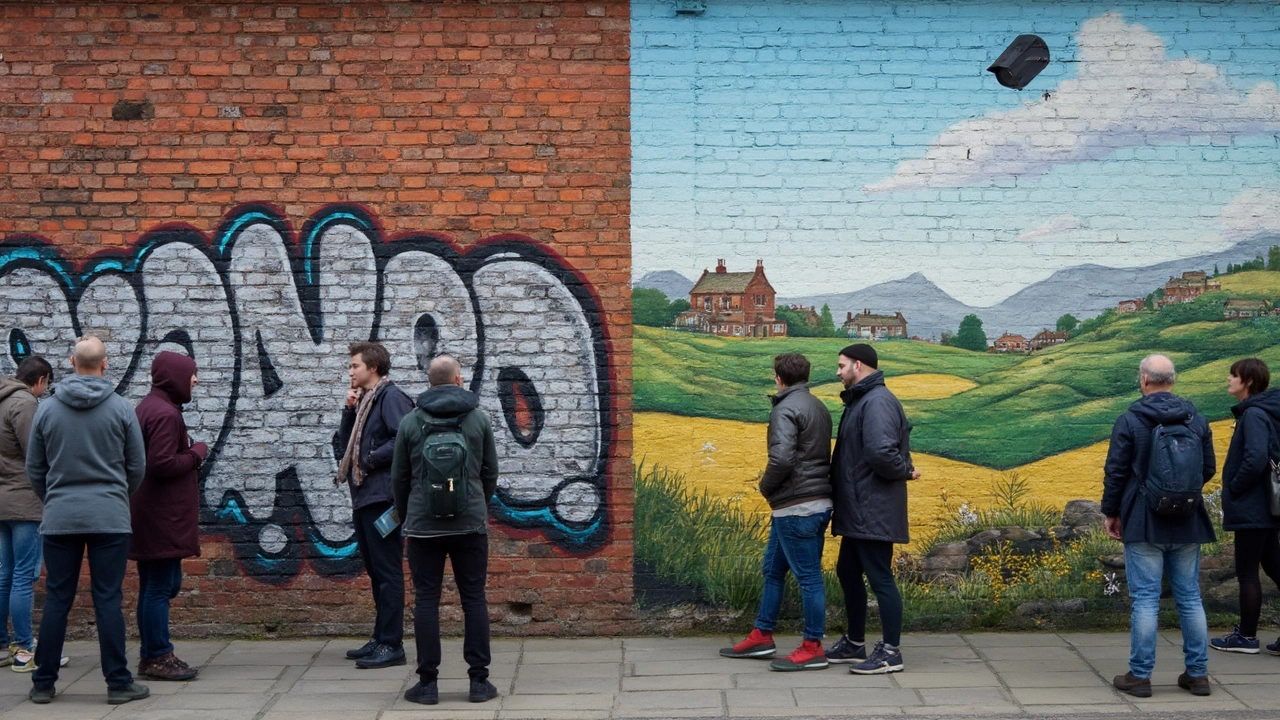
The Impact of Legal Street Art
When street art jumps from sketchy to legal, it’s like flipping a switch on a neighborhood's vibe. Legal street art can revamp areas, boosting their aesthetic appeal and even their economy. Those colorful murals often become tourist magnets, driving foot traffic, and enticing people to support local businesses. Who knew art could have such a ripple effect, right?
Economic Boost
In places like Berlin and New York City, legal street art has turned neighborhoods into literal art galleries. This surge in visitors isn't just for snapping cool Instagram pics. It's also about spending—be it grabbing a coffee nearby or picking up quirky souvenirs from street vendors. When streets get an artistic makeover, local businesses see an uptick in sales.
Community and Cultural Impact
But it’s not all about dollars and cents. Legal street art often fosters a sense of community. It can tell the story of a place and its people, offering a platform for both emerging and local artists to voice their messages. These pieces can challenge viewers, provoke discussions, and even inspire change. Sometimes, art is the loudest speaker in a city.
Social Engagement and Route to Change
There’s a real social angle to consider too. Legal street art makes art accessible to everyone, not just those who step into galleries. This democratization of art can impact social movements, crafting a shared cultural identity that's inclusive. Street art has a way of reflecting societal issues, often sparking conversations about topics that might otherwise go unnoticed.
So, when you see a city embracing legal street art, they're not just tackling issues of legality. They're inviting a means for cultural, economic, and social growth. All through the power of a spray can and a big blank wall.
